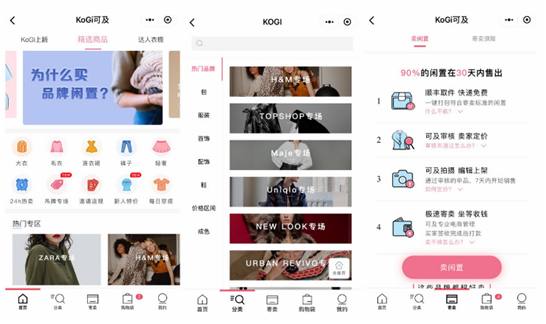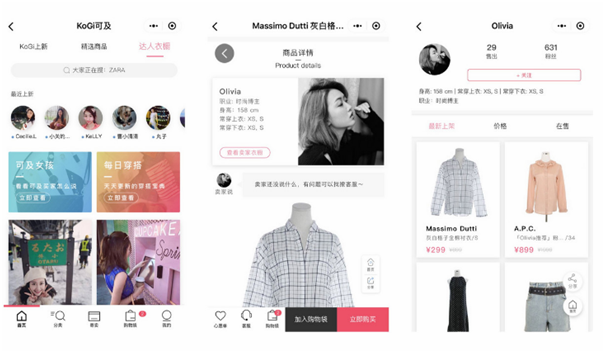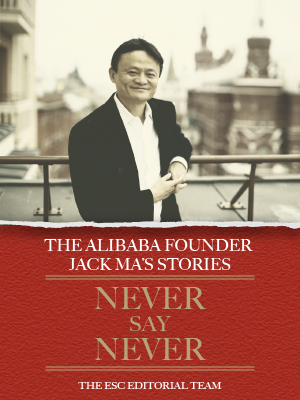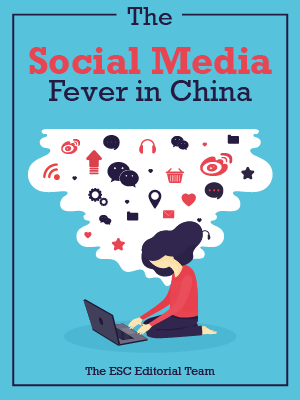Ecommercestrategychina.com uses cookies and other technologies to provide you a better browsing experience. You can get more information regarding the use of cookies, or decline it whenever by clicking Privacy Policy. By using this site or clicking “Okay”, you give us the consent to the use of cookies.
OKAY.jpg)
The “second-hand economy” is booming in China, from flea markets to the online world. As introduced in a previous post, the increasing consumption in China has led to a soaring demand for environmentally friendly disposal of used and unwanted goods. Many companies have embarked on the second-hand business offering products ranging from 3C products to luxury items and more.
But will there be a market for second-hand clothing in fast fashion brands such as ZARA, H&M and UNIQLO? The Chinese start-up KoGi, which positioned itself as second-hand e-commerce and was launched for the first time in the WeChat Mini Program last August, is trying to give an answer.

The first question for KoGi, which all other companies have to face, was who their target customers should be. Sarah, COO of KoGi, defines the company as “a Pinduoduo for younger generations”. This means that the products it offers will be at a very reasonable price. For example, winter clothing costs about 150 to 200 RMB (about 20 to 30 USD). With the popularisation of the mobile Internet and the declining mobility of the population, the difference in consumption between the urban cities and the lower-tier ones is narrowing. As a result, the difference in brand awareness among young consumers living in different regions is smaller. Following this trend, fast fashion brands are rapidly expanding their physical outlets to these formerly obscure markets to generate more sales. KoGi believes that the need for fast fashion products also exists in the online area, where the supply will be more flexible. Compared to B2C e-commerce, it hopes to win the market with price advantages.
What about the buyers?
The changes in the attitudes of consumers, who are “greener” than before, and no longer believe that used-goods are inferior and even “unlucky”, have paved the way for second-hand businesses. However, instead of selling the luxury items to maximise the residual value, people often sell the cheaper clothes for the purpose of “tidying up the wardrobes”. The data shows how big this market could be - the sales volume of H&M in 2017 was around RMB 8 billon and the frequency of new arrivals of these brands has increased. “Since the item is not expensive, I can make money by selling it at whatever price”, that is what most sellers on KoGi think. In the future, second-hand e-commerce can offer these price-conscious consumers a new shopping opportunity. In this model, KoGi receives 15% of sales; the minimum for each deal is RMB30.
To improve operational efficiency, KoGi provides a special section in addition to the conventional display of products and content about match-up. It is a homepage of the seller on which all articles to be sold are exhibited and others users can follow them. By adding the social element and setting up an online community, users’ buying impulses are stimulated and encouraged to complete transactions.

On the homepage, you can click on a seller’s “wardrobes” to check all the items on offer (see Picture 2 and 3).
According to Sarah, many women have basic questions before deciding to buy something. Their interest in clothing recommendation tips and worship of relevant advice from KOLs, as well as the increasing popularity of social sharing platforms such as Little Red Book have proved this. According to KoGi, one of its loyal users has purchased 50 items since the launch and each buyer can provide an average of 20 to 30 products in a single quarter. The high product transfer rates make users more bound to the platform. In the long term, the company expects the categories to expand and become a second-hand consumer goods trading platform for women, including clothing, footwear, bags and makeup products, etc.
China’s second-hand transaction market will offer great growth opportunities in the coming years. At this moment, the enterprise, which is able to accurately gauge the needs of buyers and sellers for more professional and efficient secondhand transactions, will hopefully become the potential king of the market. As with other e-commerce businesses, using social media like WeChat and Weibo will provide a digital boost in terms of distribution channels and online authentication.
Please Login to add comments.

$9.99 $19.98

$9.99 $19.98